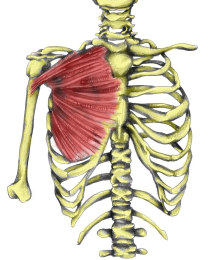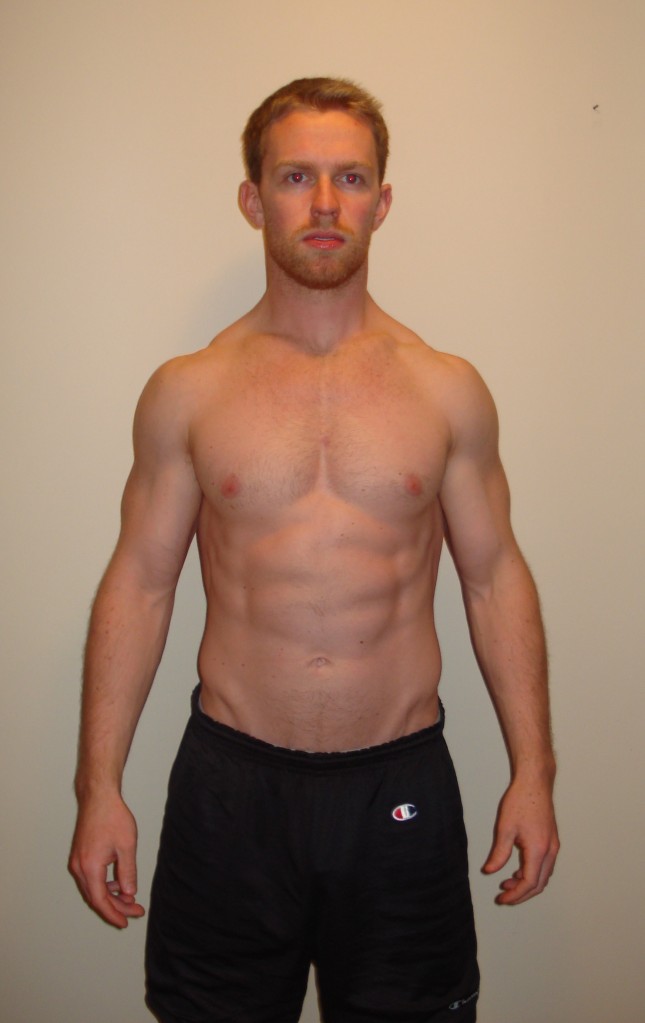In Part 1 of this “Dissecting Muscle Function” series, I outlined many of the characteristics of muscle that dictates its function. While this was far from a comprehensive look on muscle function, it does illustrate a few of the major concepts that dictate how we produce force, and how these components can be manipulated to improve performance. If you missed it, check it out here: Dissecting Muscle Function: Force Production
In Part 2, I want to demonstrate the vast influence that muscle can have on surrounding structures. Many of these concepts can be described within the paradigm of regional interdependence, which I touched on in a recent post.
Origins and Insertions vs. Attachments
When I first learned about muscle anatomy, it was very simple. Each muscle originated on one bone, inserted on another, and when movement was warranted, the origin stayed fix while the muscle moved the insertion. I’ve come to appreciate that this is a GROSSLY over-simplified view of functional anatomy. In reality, muscles don’t have “origins and insertions” as much as “attachments”. This distinction is important, as it implies that either end of the muscle segment is prone to stability or mobility. Certainly specific joints lend themselves more toward a specific end of that continuum, but there are countless examples of “origins” moving while “insertions” stay still, and excessive motion at joints thought to be stable is a common cause of injury. As a simple example, consider that the biceps bring the forearm to the shoulder in a typical curling movement, but bring the shoulder to the forearms in a chin-up movement. This is the same muscle and same movement (elbow flexion), but with a different point of stability in each exercise.
Functional Anatomy
Even in adopting a new appreciation for the appropriateness of using attachments in place of origins and insertions, there is still much more complexity to the muscular system’s influence on movement than is taught in traditional anatomy classes. Muscles almost always have influence in multiple planes, and express different movements depending on whether the movement is open- or closed-chain. For example, most people are familiar with the fact that the soleus, one of the calves, serves a primary role in plantar flexion (pushing up onto your toes). However, when the feet are fixed on the floor, as in a squatting/deadlifting pattern, the calcaneus is relatively fixed, and therefore the soleus will function to pull the tibia posteriorly. Although this is technically plantarflexion, this directly translates into knee extension, and in the presence of a stationary pelvis, hip extension. In this way, the soleus is a knee extensor in closed chain movement, and also influences the hip.

Soleus: Plantarflexor, knee extensor, hip extensor?
Similarly, muscles play a significant role in joint orientation. While this is somewhat implied by the understanding that muscles move bones, the totality of this relationship is frequently overlooked. For example, fibers of the pectoralis major extend from the sternum, horizontally across the ribs, and insert into the intertubercular groove of the humerus. When describing the function of the pec major, it’s role in glenohumeral flexion, horizontal adduction, and internal rotation is often emphasized. However, the force transmitted to the humerus to produce these motions is dually transmitted to the sternum. The pec major is a major influencer of sternal position (no pun intended), and therefore of the positioning of the opposing pec major. In this way, muscles can influence the positioning and consequent function of bones and muscles.

Note the strong connections of the pec major to the sternum
Interestingly, it is often (but not always) the muscle that is eccentrically loaded that people subjectively feel as tight. In the above example, this would mean that the short or excessively stiff pec major that biases the sternum in one direction may feel relatively normal, whereas the opposite pec major that is under increased tension because of the sternal orientation may feel tight. Stretching, in this case, is not desirable and could even be harmful, as the muscle is already in a lengthened state, and pushing through this could result in compensatory movement of other segments and/or lead to laxity of surrounding tissue.
Postural Restoration Institute
Fortunately, many of these orientations are fairly predictable via the Postural Restoration Institute methodology, which seeks to drive the body toward a more neutral orientation as a means of restoring reciprocal motion between the left and right halves and therefore of improving performance and decreasing injury risk.
I was able to dig up a picture from a couple years ago that I took as part of a new diet experiment. Check out the picture below and note any side-to-side differences. What do you see?

While some of these things can be difficult to pick up at first if you don’t have a well-trained eye, the fact that my skin is pale to the point of borderline translucency should help. You may notice that my hips are rotated to my right (note the difference in the position and prominence of my obliques), my upper torso is rotated back to the left (note how my right hand is positioned in front of my left hand, and how the left pec major appears to be rotated back and more stretched out), and I’m slightly side-bent to the right (note how my right hand is about an inch lower than my left). You can see that these asymmetries extend up to the orientation of my head (see how much more apparent my right ear is?).
This is a textbook illustration of what PRI would describe as a Left AIC, Right BC position, and, assuming no ligamentous laxity, I would expect to see a decrease in left hip adduction and extension, right glenohumeral internal rotation, and left glenohumeral flexion and horizontal abduction secondary to poor positioning. In other words, it’s not necessarily that short/stiff muscles are limiting the range of motion, it’s simply the position of the underlying skeleton that is positioning the muscles poorly to perform their role. This is evidenced by the fact that in most cases almost complete symmetry can be restored in less than a minute with any number of relatively simple exercises that use active muscle contraction and breathing to re-orient specific bones into a more neutral position. Simply, in one minute, almost full range of motion can be restored. Do you think a baseball pitcher could benefit from 15-20 more degrees of internal rotation on his throwing arm? Can you appreciate how a hockey players stride and crossover ability will be affected by improved hip extension and adduction on the left side?
Wrapping Up
Hopefully you see the importance of understanding the integrated nature of our musculoskeletal/connective tissue and neural systems, and the power in a system that addresses these systems collectively. Relating back to the introductory topic, a muscle’s function is largely dictated by its position, which can be heavily influenced by the role other muscles play in driving and responding to skeletal positioning. The ability to view the body as an integrated system is invaluable, and a failure to do so can have frustrating and even tragic consequences.
To your success,
Kevin Neeld
P.S. Don’t forget, you have only have a few days left to get access to a TON of information to help make you stronger, faster, and get you in drastically better shape for only $1! Click here now >> Elite Training Mentorship
Please enter your first name and email below to sign up for my FREE Athletic Development and Hockey Training Newsletter!